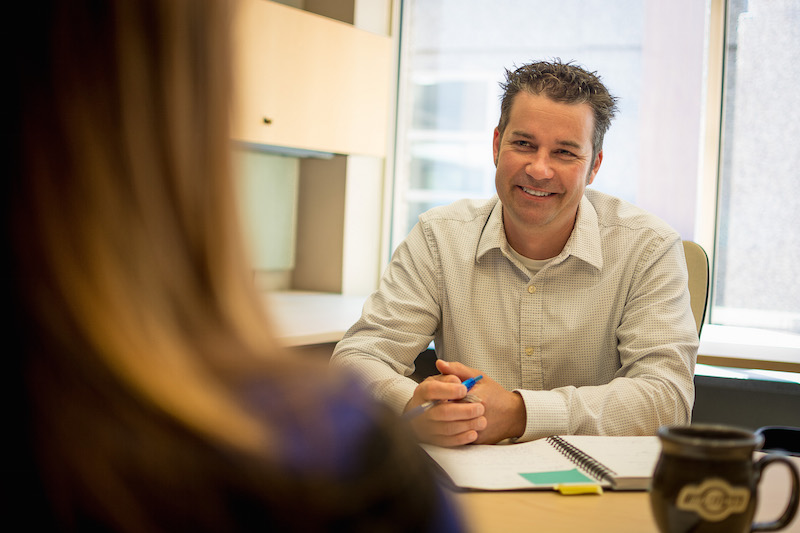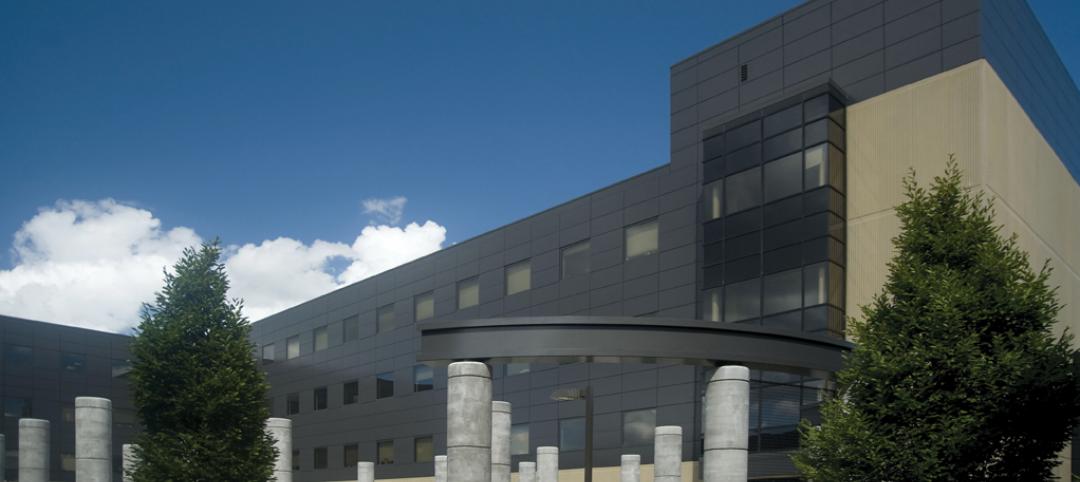Eric Marcoe is 42 years, married, two young kids, likes to canoe and hike.
Nothing out of the ordinary until you hear that for the past two years Marcoe has been Miron Construction’s “dream coach,” a position the Wisconsin-based contractor initiated in 2013 to help its employees achieve personal goals that sometimes—but not necessarily—coincide with the company’s work goals for them.
The genesis of Miron Construction’s Dream Project was in the form of a gift: Tonya Dittman, Miron’s pre-construction specialist, gave a copy of The Dream Manager by Matthew Kelly to the company’s CEO and co-owner David Voss.
From that exchange emerged a program, which Miron Construction manages through its human resources department, that is unique because “it’s 100% personal,” says Marcoe.
His background included stints as a corporate trainer and coach. Prior to becoming Miron’s dream coach, he was doing organizational development for a healthcare company that involved leadership training and coaching. He has received International Coach Federation certification through the Institute for Professional Excellence in Coaching.
But Marcoe doesn’t provide answers or advice to Miron’s employees. Instead, he creates space for the individual “to think, feel, and see [him- or herself] closely in the mirror” that Marcoe sees himself as representing.
Indeed, some employees come to Marcoe not knowing what they want to do. His role is to “pick up on” themes in order to help them identify goals and the obstacles that prevent their achievement.
The company has posted several videos on YouTube of employees who have gone through the Dream Project’s self-actualization process successfully.
Mary Cummings, a project accountant, came to Marcoe with the goal of becoming a published writer. This ambition didn’t come from out of the blue, Marcoe tells BD+C, as Cummings’s her mother and sister had been published, and Cummings (who has a degree in economics) has had a long-time interest in journalism, communications, and blogging.
As Marcoe spent more time with her, Cummings “grew into an awareness of herself,” and within two months (May 2016) she had placed an article with her favorite online magazine. This process, says Marcoe, also allowed Cummings “to see her potential in other areas,” and to see her larger goal as writing the chapters of her life. Cummings says the Dream Project helped her “learn a set of skills to allow you to accomplish whatever goals you have in the future.
Marcoe’s greatest success to date, in his estimation, has been Jason Fuhrman, Miron’s director of hard-bid estimation, primarily because Furhman was a skeptic. “He didn’t believe in the Project, and two months in, I was asking myself ‘what have I gotten myself into,’ ” recalls an amused Marcoe.
Fuhrman was unconvinced that he could have a dream “with all the stuff that’s going on with my life.”
In their early sessions, Marcoe and Fuhrman focused on how Furhman could delegate more tasks to others in his department in order to free up time at work and at home to do things he enjoys, like downhill skiing with his seven-year-old daughter.
“It’s really changed my life and has given me a more positive outlook,” says Fuhrman. He sees the whole point of the Dream Project “to give people at Miron a better life and home, and a better life in general.”
And Marcoe says that Fuhrman’s “conversion” to the process was a key to convincing more of Miron’s employees to participate. “Many employees now looking to meet with me have been encouraged by a coworker who has experienced coaching and has been inspired by the who they have become.”
Miron employs 1,200 people, and during his tenure as dream coach Marcoe has “encountered” more than 125 associates, and currently works actively with 50.
Marcoe says that he’d like to incorporate group coaching into the Dream Project. And longer term, he’s like to teach coaching courses, so that Miron’s culture “gets to the point where my role would be eliminated.”
Related Stories
| Apr 12, 2011
Metal cladding: Enhancing design with single-skin panels, MCMs, and IMPs
Single-skin metal panels, metal composite panels, and insulated metal panels can add both aesthetic and functional value to your projects, if you use them correctly.
| Apr 12, 2011
American Institute of Architects announces Guide for Sustainable Projects
AIA Guide for Sustainable Projects to provide design and construction industries with roadmap for working on sustainable projects.
| Apr 5, 2011
What do Chengdu, Lagos, and Chicago have in common?
They’re all “world middleweight cities” that are likely to become regional megacities (10 million people) by 2025—along with Dongguan, Guangzhou, Hangzhou, Shenzhen, Tianjin, and Wuhan (China); Kinshasa (Democratic Republic of the Congo); Jakarta (Indonesia); Lahore (Pakistan); and Chennai (India), according to a new report from McKinsey Global Institute: “Urban World: Mapping the economic power of cities”.
| Mar 22, 2011
San Francisco ready to test hiring law
San Francisco's new construction law, billed as the nation’s toughest local hiring ordinance, establishes strict requirements for how many work hours on city-financed projects must be completed by city residents, starting with 20% this year. It also requires that a set percentage of hours be performed by low-income workers. The requirements apply to municipal construction projects worth more than $400,000 within 70 miles of the city.
| Mar 15, 2011
Passive Strategies for Building Healthy Schools, An AIA/CES Discovery Course
With the downturn in the economy and the crash in residential property values, school districts across the country that depend primarily on property tax revenue are struggling to make ends meet, while fulfilling the demand for classrooms and other facilities.
| Mar 11, 2011
University of Oregon scores with new $227 million basketball arena
The University of Oregon’s Matthew Knight Arena opened January 13 with a men’s basketball game against USC where the Ducks beat the Trojans, 68-62. The $227 million arena, which replaces the school’s 84-year-old McArthur Court, has a seating bowl pitched at 36 degrees to replicate the close-to-the-action feel of the smaller arena it replaced, although this new one accommodates 12,364 fans.
| Mar 11, 2011
Temporary modular building at Harvard targets sustainability
Anderson Anderson Architecture of San Francisco designed the Harvard Yard childcare facility, a modular building manufactured by Triumph Modular of Littleton, Mass., that was installed at Harvard University. The 5,700-sf facility will remain on the university’s Cambridge, Mass., campus for 18 months while the Harvard Yard Child Care Center and the Oxford Street Daycare Coop are being renovated.
| Mar 11, 2011
Renovation energizes retirement community in Massachusetts
The 12-year-old Edgewood Retirement Community in Andover, Mass., underwent a major 40,000-sf expansion and renovation that added 60 patient care beds in the long-term care unit, a new 17,000-sf, 40-bed cognitive impairment unit, and an 80-seat informal dining bistro.












